PAGE 99 – July 2010
H O T I D E A S F O R S M A L L R A I L R O A D S
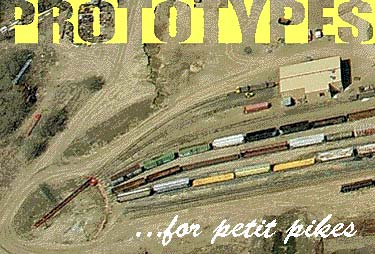
In This Issue
Very Large Array—Try a gargantuan but elegant prototype
Real Life Switching Shelf—Prototypes make micros, too
Northwest Railway Museum—They have one of everything
Edgware Road—Consider a Victorian London station
Car Repair Shop—Use any kind of rolling stock here
Kershaw MOW Plant—Find a place for those nifty MOW machines
Huangdan Coal Mine—model the entire RR as a micro
Alderney Railway—Unique short line in the Channel Islands
Óbidos—Train watching at an elegant station in Portugal
Plym Valley Railway—Preservation lines make good micros
Holstebro Industrial Railway—Fictional railroad fits real Danish scene
Plymouth Ocean Quay—Real track plan fits puzzle pattern
Salida Barrel Transfer—Rio Grande dumper: a modeling challenge
Scenes from prototype railways (sometimes called “layout elements”) can provide inspiration
and even track plans for complete small or micro layouts. In our tireless search for
interesting and unusual prototypes for modeling, we’re often aided and
abetted by you, the reader. By way of saying “Thanks!” and
“Please send some more!”, here’s a page full of real-life
snippets sent in by readers. They range from nitty gritty coal
mining (in China!) to gargantuan radio telescope antennas (in western U.S.),
including such real-life oddities as a working sector plate (in title block above)
located at a railroad repair shop in Kimball, Minnesota USA. As these prototype pages are among
the most popular in this Scrapbook, we hope you enjoy this new crop.
And if you adopt one of these ideas, please send photos whenever you’re ready!
NOTE: There will be NO mid-month Scrapbook for July 2010. Next issue will appear on 1 August.
THE VERY LARGE ARRAY (VLA)… A REALLY BIG PROTOTYPE!
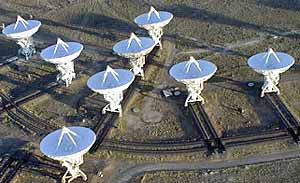
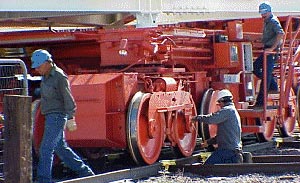
The Very Large Array (VLA) is an enormous radio telescope site operated by the National Radio Astronomy Observatory some 50 miles west of Socorro, New Mexico USA. Each of the 27 giant antennas in the array weighs 270 tons… and they are operated in a variety of configurations (part of D configuration is shown above left). Thomas Schroeder, from Poing, Germany called the VLA to our attention, writing, “They change the configuration by transporting the antennas to different places by a transporter (below left) via [their own] railway. The base of every antenna sits at 90 degrees to their ‘main line.’ To get to the bases, every truck [bogie] of the transporter is rotated by 90 degrees (above right). So they have no switches! I think it is a very good inspiration for a small layout with a lot of action to be taken to switch the configuration. And it’s something different.”
In addition, for repairs and maintenance the antennas are taken by rail to the service area—a unique car shop (below right), very different from the more-familiar shops shown farther down this page. If you’re looking for a unique railroad that could inspire a monumental scratchbuilt model layout, this could be it! (All photos courtesy NRAO/AUI.)
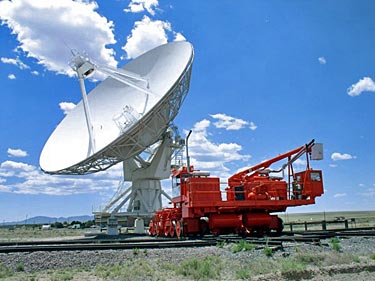
Image courtesy of NRAO/AUI and Photograph by Dave Finley
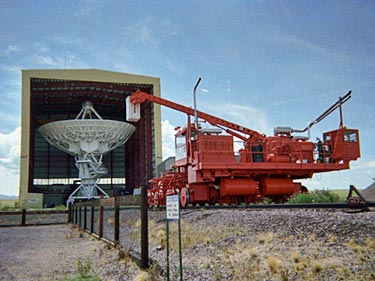
Image courtesy of NRAO/AUI and Photograph by Patrick A. Lofy
HOW ABOUT A REAL LIFE SWITCHING SHELF (SHUNTING PLANK)?
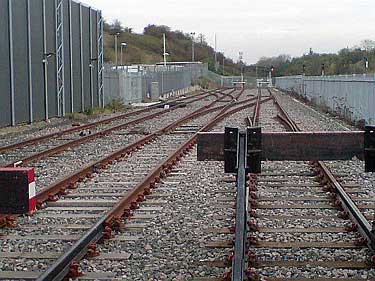
It seems that the British railway system occasionally take time out to build a micro layout of their own. Australian David Bromage passed along this photo from RMWeb, which is labelled as “training sidings” at Bristol Parkway Network Rail Training Centre. Apparently for use by apprentice railwaymen, it’s fenced off and is connected with the main line via a gate at the far left.
Looks suspiciously like a micro switching layout, doesn’t it? It’s easy to find it on Bing Maps, just search for “Bristol Parkway, UK” and look eastward a bit until you see the scene below. It’s about as prototypical as you can get with a flat slab of foam, a few turnouts and some flex track.

EXPANDING NORTHWEST RAILWAY MUSEUM MAKES A GOOD PROTOTYPE
Bird’s Eye photo courtesy Bing Maps
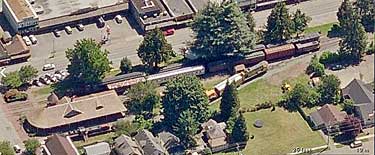
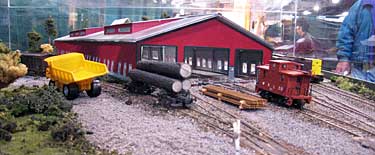
Snoqualmie, Washington, USA, is a delightful community located at the head of an impressive waterfall and the foot of a rugged pass through the Cascade Mountains, to the east of Seattle. It’s also the home of the Northwest Railway Museum which is restoring and runs a very large collection of railroad equipment, much of it remaining from past Northwest logging activity. The museum is headquartered in an elegantly restored Victorian depot, right in the heart of Snoqualmie. There’s much more information about the museum at their website.
From a modeler’s point of view, the trackage at the depot (above left) is essentially a long Inglenook arrangement. A model of this area would have excellent possibilities for operations after it’s built! In an e-mail about the museum Prof Klyzlr, from Sydney, Australia (who has visited there), commented, “They have enough ‘dead’ equipment (including a NP rotary snowplow and mallets!), that needs moving around for various preservation tasks to be performed on each piece, that the switching could get really interesting.” Imagine: working an Inglenook game where the moving pieces were items of historic railroad equipment!
Another modelable aspect of the museum is its new Railway History Center Train Shed, a large building to store and exhibit more fragile equipment, especially those made of wood. The museum has built and is touring a portable model in HO scale of the new building (above right). (This photo was taken last fall, at the WGH train show in Puyallup, Washington.) Meanwhile, operations and activities continue down the line. Carl Arendt, from nearby Olympia, reports, “My grandson, aged three, thoroughly enjoyed his day with Thomas the Tank Engine, and he can’t wait to go back for more!”
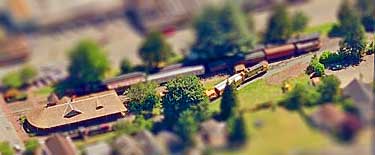
FOOTNOTE: The overhead view of NRM’s depot and trackage reminded me that several readers have recently written about “tilt-shift” photography. It’s a technique for making photos of real scenes look like models, mainly by blurring the edges and hiking the color saturation. I tried it using PhotoShop on the aerial view, with the result at right… sure enough, it sort of looks like a Z-scale model! I learned how to do it here. A video was passed along by Steve Schwab. —Carl Arendt
KNOTTED URBAN TRACKAGE IN LONDON IS EMINENTLY MODELABLE
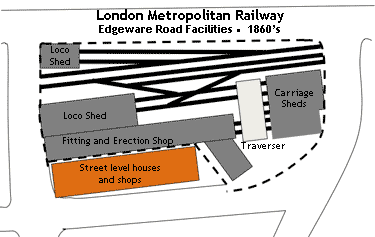
Kevin Payne sent along an attractive sketch of the 1860-era engine sheds and workshops of the Metropolitan Railway in London (the world’s first underground railway). The double-track main line pops out at upper right and runs diagonally, disappearing under a bridge. In that era, the track was actually mixed gauge—both standard and seven-foot gauges! Kevin wrote, “I offer the plan as an inspiration to micro-builders, with the thought that [the site could be] compressed even further than it was in reality. The structures were all quite ornate… and the trains were short, being composed of tank engines hauling very short bogie coaches and goods trains of small four-wheelers.”
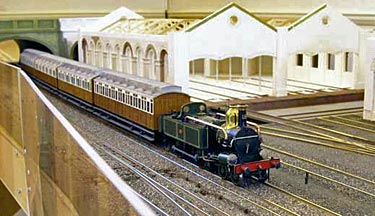
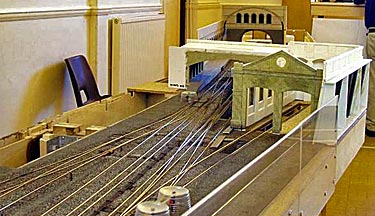
Kevin also passed along a link (now broken) to a long-term modeling project to build this scene (as well as Edgware Road Station just beyond) in O scale, using a fiddle yard at each end. Here are two photos I rescued to show this outstanding model under construction by Paul Marchese and the late Mike Jolly. I understand that Paul has added considerably to the layout since these photos were taken, but they give a good idea of the scene, as well as the incredible complexity of the dual-gauge trackage! Additional information about this wonderful layout would be greatly appreciated.
As far as locating the site is concerned, Kevin explains, “The site was at Edgware Road near Paddington and is now occupied by platform tracks of Edgware Road station and an office block. Google Maps show it in great detail, look at the area bounded by Marylebone Road, Transept Street and Chapel Street.”
RAILROAD REPAIR SHOPS MAKE GOOD LAYOUT PROTOTYPES
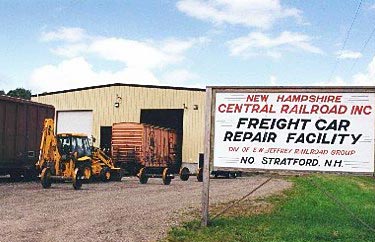
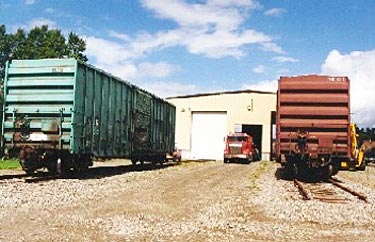
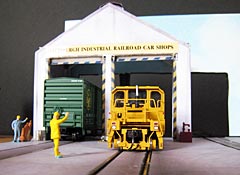
Jack Trollope, from the Highlands of Scotland, sent a link to the two photos above, showing the New Hampshire Central Railroad’s Freight Car Repair Facility in the New England area of the US. Photographer Mike McNamara visited this little line’s shop and posted an article in the NMRA’s NER Coupler magazine. He placed special emphasis on the fact that almost any type of car would be used at this type of facility. Thanks to Jonathan Caswell for identifying the photos, and to Keith Ballinger for locating the article. Jack commented that this little shop could indeed be a prototype for Carl Arendt’s Carnegie Car Shops, a micro-layout version of a repair facility (right).
Courtesy Bing Maps
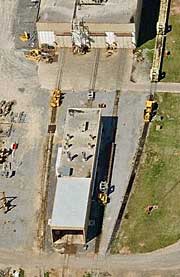
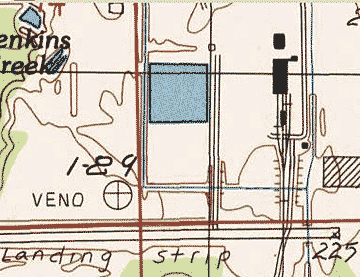
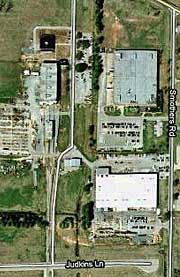
Courtesy Google Maps
On the same train of thought, so to speak, above are some photos and a U.S. Geological Survey plan of the Kershaw MOW Equipment plant near Montgomery, Alabama. Kershaw manufactures and repairs many of those wonderful track maintenance and right-of-way repair machines that are so wonderful to watch (and models of which are now readily available!). You can just make out a few of them sitting on the sidings in the close-up aerial view (above left).
Frequent contributor John Lucas, from Troy, Alabama, sent this information, and commented, “The track plan resembles an Inglenook. This could be a very exciting layout for the modeler interested in modern track maintenance equipment… One other point is that the street shown as Judkins Lane that crosses the switching lead was once an aircraft landing strip according to the USGS map! Another example of a railroad crossing a runway!” What an irresistible prototype!
YOUR MICRO CAN PORTRAY THIS ENTIRE CHINESE COAL MINE LINE
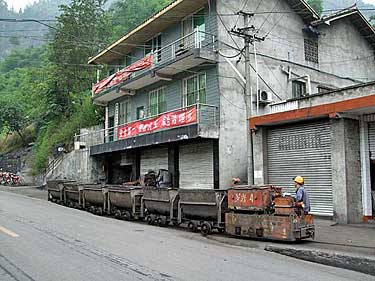
2
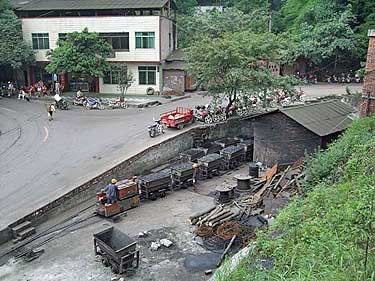
1
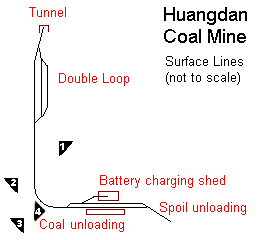
Huangdan Coal Mine tramway, in Sichuan, southwest China, is one of the few prototype railways you can model in its entirety in a minimum space. (Mt. Albert Tramway, in New Zealand, is another.) Rob Dickinson, a Briton residing in China, has done a brilliant job of photographing and explaining virtually every foot of the Huangdan line, which could be the basis for a marvelous model layout. Rob’s web page about the line, along with two videos (below), make clear every aspect of the battery-powered railway and its operation. Thanks to Rob for generously allowing us to publish a few of his photos and a video for your enjoyment.
The little trains haul coal from the mine to the top of an incline, where they gravity-dump loads into waiting trucks (lorries). Mine spoils are also hauled and dumped from the end of the line. The trains also run underground, and a diagram of those tracks is shown in a photo at the website.
Rob also offers a variety of DVD tours of various Chinese and other Asian railway installations, many of them highly modelable. Thanks also go to Scott Markloff, from British Columbia, Canada, who discovered the Huangdan web page and first drew it to our attention.
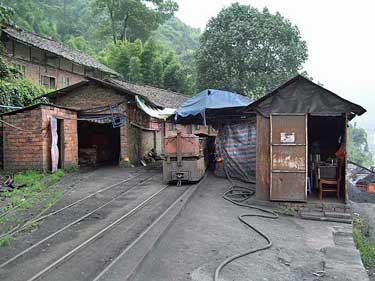
4
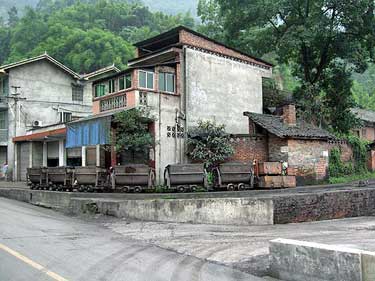
3
CHANNEL ISLANDS’ SOLE RAILWAY BOASTS UNUSUAL ROLLING STOCK
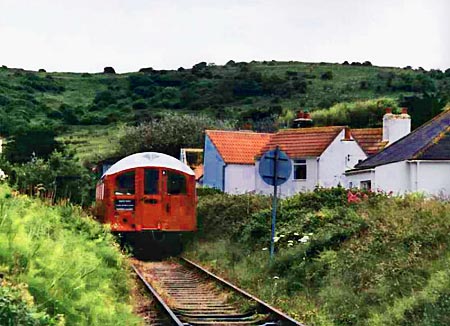
Frenchman François Mennetrier sent some information about Alderney Railway, the prototype he’s using for his O scale model. Alderney is the third largest of the English Channel Islands (about one by three miles) and the closest to France (only six miles offshore). But the island remains British both politically (it’s a Crown dependency) and in its character. The standard-gauge Alderney Railway is a delightfully eccentric short line, founded in 1847, that claims to be the only railroad in the Channel Islands.
The railway has some remarkable rolling stock, such as two London Transport (subway) cars that are used as passenger carriages, hauled by Elizabeth, a Vulcan Drewry 0-4-0 diesel locomotive (lower right) that 20 years ago replaced the original Bagnall 0-4-0 steam locomotive. One of the sights on a trip is the German fortifications, built when the island was occupied during World War II. Another sight is the remarkable little railcars (lower left), that serve for MOW or special passenger transport. It’s a wonderful prototype railway to model! There’s much more information at the railway’s website. All photos by Simon Robinson, used with permission.
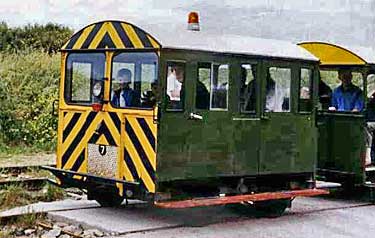
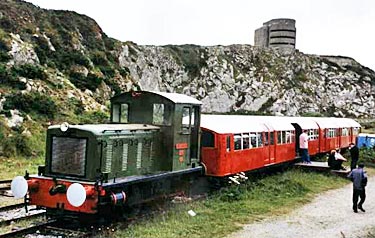
TRAINWATCHERS’ SPECIAL: AN APPEALING PORTUGESE STATION
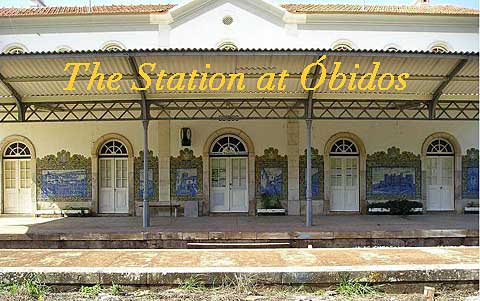
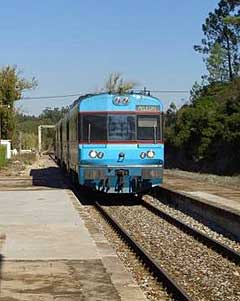
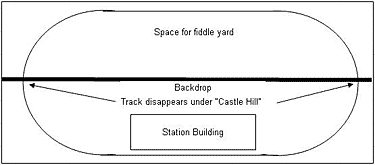
Henning Stelter, who is German and lives in Portugal, shared with us another of his local railway discoveries. The medieval walled town of Óbidos is located on a hilltop, with an exceptionally elegant railway station nestled at the base of the hill. The setting is a natural for a single-track oval (at left) to feature a parade of DMUs stopping at the station. A delight for train spotters! The attractive station building was issued as an H0 cardboard kit, and Henning provided a photo of his copy (lower right, now discontinued).
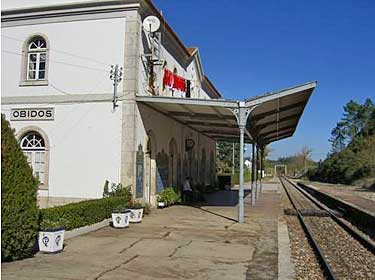
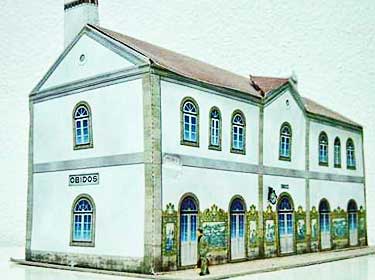
PLYM VALLEY LINE PROVIDES MICRO OPPORTUNITY IN DEVON

There are many preserved branch lines in the U.K. that provide good prototypes for micro layouts. Frank Edgcombe, now from Hampton, Virginia USA, sent us some information about one Work-in-Progress, the Plym Valley Railway, near Plymouth in Devon, England. Frank wrote, “Its present station, Marsh Mills, I think would make an ideal small layout, and I plan one day to model it. The total line is only about 1.5 miles long and the station would, I think, fit a micro layout format…
“I have joined the heritage railway. They have now got about half way to their goal of recreating the line to Plym Bridge, a really beautiful part of the valley of the River Plym. It is solely supported by voluntary contributions and has not applied for any lottery support or grants from other agencies. Their website shows their stock and pictures of their accomplishments.”
The aerial view (above, from Bing Maps) of Marsh Mill station shows the current layout of the area, and the railway’s own schematic drawing (below right) shows the way the trackage is laid out. There’s lots more information on the website. The aerial photo sort of looks like a model already, doesn’t it?
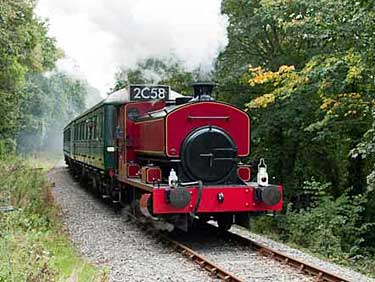
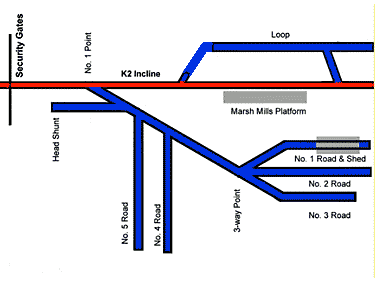
IMAGINARY SHORT LINE COULD FIT IN REAL CITYSCAPE

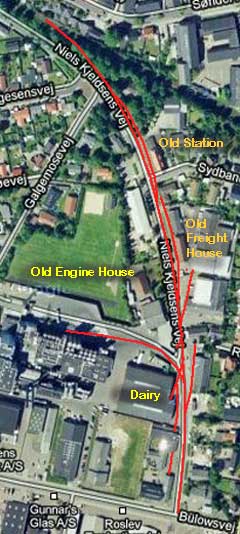
Here’s a different approach to prototype modeling… here we have a prototype city setting for which the model can provide a railway! Carsten Weye Jensen explains how he designed an imaginary model railway to fit into his very real hometown of Holstebro, Denmark: “This place had until 1961 a private railroad called RØHJ, but it was then closed and rails removed. There’s still evidence of it being there—the old station, the engine house and the freight house are still there.
“This layout came up in my head because, almost every morning as I go to work, I drive by the location where the Holstebro part of RØHJ was until 1961. When I realised that there used to be a railway here, I got more and more interested in the area. I could see why the road took the shape it had, and so I began to think, ‘what if this could be resurrected as an industrial switching area?’ The industries are there, and in a time when switching lines have been shut down, why not go the opposite way? Obviously I can’t do that in 1:1, but I could do it in a model and get an interesting little layout!
“So my little layout plan is completely fictional—a show of ‘what could be’.” The red lines on the aerial view of Holstebro (left) show how Carsten’s imaginary line fits into the topography of the town (and follows the original route of the RØHJ). The original station (below left) and freight house (below right) are shown as they appear today and could be incorporated into the model.
This strikes me as a clever idea… and perhaps a way to help spark a potential revival of railroad freight handling at the local level, much the way small localized lines have done in the U.S. And after all, good models make their subjects seem real, do they not?
Photos courtesy T. Rithmester, used with permission.
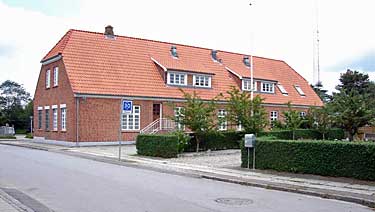
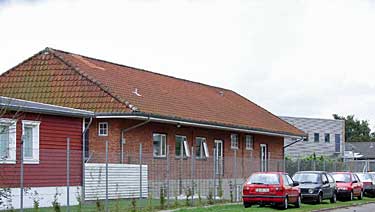
LIFE MIRRORS ART: PLYMOUTH HARBOUR MATCHES OUR SHUNTING PUZZLE!
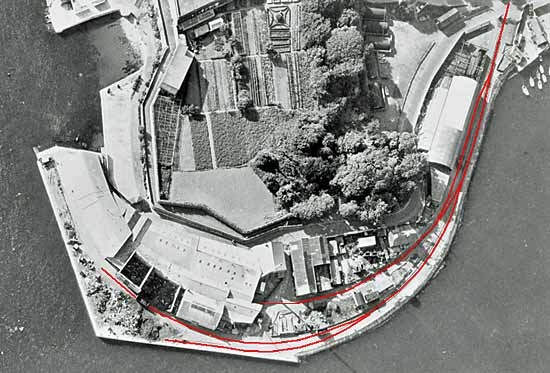

Frank Edgcombe, our Man from Devon (England), also sent the observation that Ocean Quay, in Plymouth Harbour, formerly had exactly the same track plan as the End of the Rat Hole puzzle in Scrapbook #92a. We found this 1920’s aerial photo of Ocean Quay showing the track plan (traced in red). And sure enough, it’s a mirror of the puzzle plan (shown as a mirror image above).
A little more research revealed that this was the terminus of the Stonehouse Pool Branch of the LSW Railway, and later the British Rail Southern Region. From 1886 to 1910, the LSWR used the branch for passenger trains from London to meet ocean liners docked at Plymouth (ferries from these quays carried the passengers out to the anchored ocean liners). There’s a web page with lots more information about the railway branch.
To the point for us modelers is that this area provides a prototype for not only active railroading fun, but also for a very good switching puzzle game. And the scenery possibilities are intense!
TRY A MOST UNUSUAL, BUT HIGHLY MODELABLE, CAR DUMPER

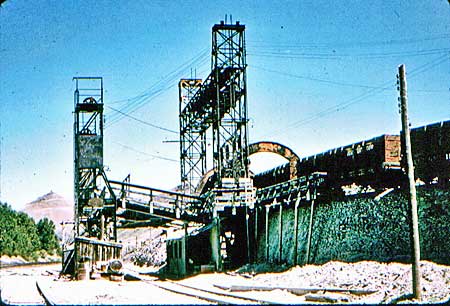
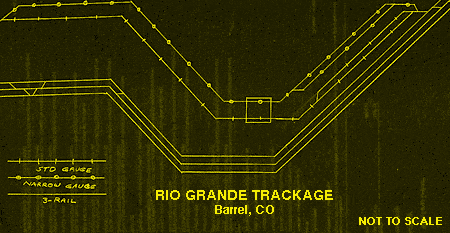
The Salida Barrel Transfer on the Denver & Rio Grande Western RR is a terrific modeling challenge… both the rolling transfer itself and a layout to showcase it in micro format (less than four square feet). Mike McLaughlin, from Denver, Colorado USA, has taken up the gauntlet. Here is his HO/HOn3 layout, in two versions: straight through (above) and right-angle bend (below).
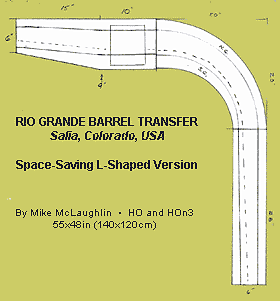
In both cases, a 42in (107cm) dual-gauge cassette would be attached at either end during operations, to feed trains to the the barrel transfer and take them off at the other end. Here, in Mike’s own words, is what the action is all about: “The prototype was on the Rio Grande at Silada and was used to transfer narrow gauge gondolas of coal into standard gauge cars. It was located on a hillside east of Salida Yard, and the mainline was immediately adjacent (diagram at bottom left above).
“The transfer (top left photo) wasn’t really a ‘rotary dumper’, the barrel transfer was rolled to the side (and slightly upwards), dumping its load directly down into the adjacent standard gauge car. It was built in 1924 and lasted until the Monarch Branch (which also hauled and dumped limestone) was standard gauged in 1956.
“According to D&RGW history buff Jerry Day, ‘One car at time was unloaded. The track through the transfer was on a downgrade. The loaded cars were dropped one at a time by gravity. Enough of this upper track was dual gauge so a standard gauge engine with dual gauge couplers could push the cars to this track. After the car was dumped, it was dropped to a waiting track by gravity.’
“Exactly matching the prototype movements might be impractical, but I believe a combination of powered and manual movements could be made.
“Starting with the narrow gauge, I’d have an engine—a small 2-8-0 or diesel—at the west end of the cassette and the balance filled with loaded coal gons. The cut of cars is pushed down to the dumper, and the first car is spotted on the barrel. A permanent magnet at the west end operates the couplers, allowing the cut to be reversed and clear the dumper mechanism. After the car is clamped in place, the platform is rolled out over the standard-gauge car, the NG car dumped and then rolled back in line with the through tracks. After the clamp is released, the cut is shoved back down to the empty and the ‘delayed uncoupling’ feature allows the empty to be pushed off the east end of the dumper. The grade starts immediately at the east end of the barrel, so the empty car should roll away allowing the next load to be spotted without any extra engine moves. The empty rolls east downgrade and then comes to a halt on the level end of the track (perhaps with the help of a ‘chock’). Repeat until all cars have been dumped and all dropped except for the last one.
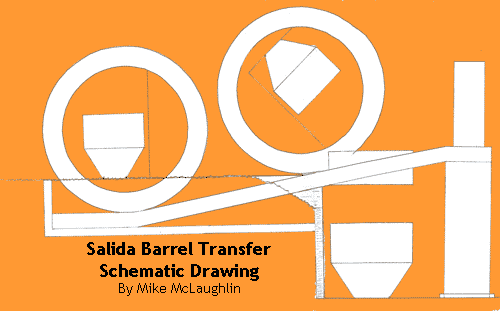
“Now move the cassette to the east end, rotating 180 degrees in the process. The engine pulls the empties onto the cassette, which is then moved back to the west end. The process continues. The standard gauge operation is almost identical. As the SG gondolas are twice the capacity of their narrow-gauge brethren, one SG car will be loaded fo each two NG cars emptied.
“The transfer itself really shouldn’t be too hard to construct in simplified form from various plastic shapes and materials and powered by manual pull cables. Motorizing and ever-stricter attention to detail would add to the complexity but shouldn’t be beyond the abilities of an experienced modeler.” And there you have it, folks… a step-by-step description of an experienced modeler’s ideas for building an award-winning, crowd-pleasing micro layout that closely follows a prototype scene!
The Silida barrel transfer was for limestone. Not coal.